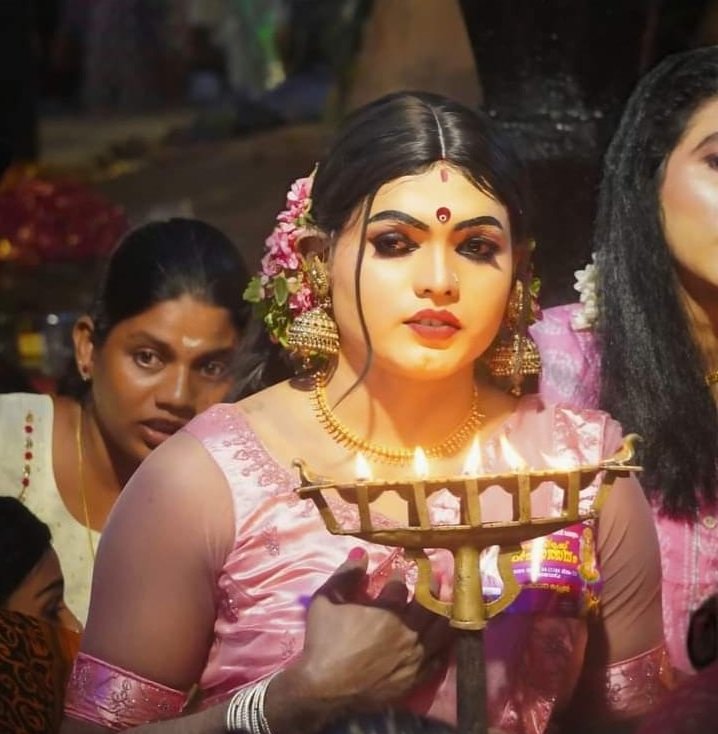– Surya Pillai
Chamaya Vilakku, a traditional ritual at Kottamkulangara Temple in Kollam district of Kerala, India, involves devotees lighting oil lamps in front of the Kottamkulangara Devi to seek blessings from the goddess. It is believed that the act of lighting these lamps brings prosperity, happiness, and protection to the devotees and their families, making it a sacred and meaningful practice passed down through generations as a way of showing devotion and gratitude to the deity.
Legend has it that a group of cow herders discovered a coconut at this location. While attempting to remove the husk by striking it against a stone in the southern part of Bhoothakulam, they were shocked to see drops of blood oozing out from the stone. Perplexed by this strange occurrence, they recounted the incident to the elders. The astrologer recommended beginning poojas immediately after constructing a temple due to the supposed supernatural powers of the stone. To comply, the elders and cow-herders quickly assembled a temporary temple using poles, and tender leaves of coconut palm. According to the then existed custom, young girls would traditionally make flower garlands and light the pooja lamps at ancient temples. To honor this tradition, the cattle herders would dress in women’s clothing and perform the rituals in the temporary temple. They would prepare a milky liquid from coconut kernels, extract medicinal oil (called Urukku Velichenna), and present the solid substance (Kottan) as Naivedyam to the goddess. Originally a regional tradition, this ceremony has gained global recognition and is now a prominent element of the festival celebrated on the 10th and 11th days of the Malayalam Month Meenam.
The festival stands as a symbol of men reconciling for their misdeeds in front of the Goddess. The term Chamayavilakku is derived from ‘Chamayam’ which translates to makeup and ‘Vilakku’ which signifies lamp. It is believed that those who participate in the ritual by donning women’s clothing, holding a lamp, and circumambulating around the temple will have their wishes granted and their sins forgiven.
From a different viewpoint, this could serve as an educational experience for men to walk in a saree and explore the effort that goes into makeup. This event also offers a chance for men to reflect on their judgments towards women who are often accused of being late due to their grooming routines. Essentially, by embracing a new look and paying homage to Bhagavathi, individuals can shed their chauvinistic mindset and embrace the inherent beauty of the feminine spirit.

The author, a seasoned freelance writer, specializes in crafting engaging content across various topics and also holds expertise in spoken English training and soft skill development.
Disclaimer: The opinions and perspectives presented in the article are the author’s own and may not necessarily reflect those of the Team Meditation affinity.
